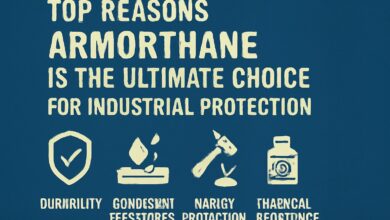Understanding the Components of a Wind Substation

In the rapidly advancing field of renewable energy, wind power has emerged as one of the most sustainable and efficient energy sources available today. As countries strive to reduce their carbon footprints and transition toward cleaner energy solutions, the role of wind substations becomes increasingly important. Hubang Electric Power Co, a leading player in new energy projects, has been significantly contributing to the development of such infrastructure, including wind substations in regions like northwest China. This article aims to explore the essential components of a wind substation and their role in ensuring that wind energy reaches the grid efficiently and safely.
What is a Wind Substation?
A wind substation is a critical part of the infrastructure that helps in the conversion and transmission of wind-generated electricity. These substations are designed to receive the low-voltage output from wind turbines and convert it into a higher voltage suitable for distribution to the grid. The electricity produced by wind turbines is typically in the form of alternating current (AC), but it needs to be stepped up in voltage before it can be transmitted long distances.
Wind substations play a central role in ensuring the electricity generated by wind farms can be efficiently and safely fed into the electrical grid. They act as a buffer between the energy generation side (wind turbines) and the transmission and distribution network. The complexity and importance of wind substations cannot be overstated, as they ensure that the renewable energy harnessed from wind can be delivered to homes and businesses across vast distances.
Key Components of a Wind Substation
- Transformers
At the core of every wind substation is the transformer. Wind turbines generate electricity at a relatively low voltage, typically between 690V and 1.2kV. To transmit this power efficiently over long distances, the voltage must be increased, and this is where the transformer comes into play. It raises the voltage from the turbine’s output to the required level, typically 110 kV, 220 kV, or even higher, depending on the distance and infrastructure.
Hubang Electric Power Co plays a crucial role in the development and installation of these transformers in wind substations. The transformers are designed to ensure that energy loss is minimized during the conversion process. They operate through electromagnetic induction, transferring electrical energy from one circuit to another while increasing the voltage. By stepping up the voltage, the substation ensures that power can be transmitted efficiently through the grid.
- Circuit Breakers
Another critical component of wind substations are circuit breakers. These devices serve as safety mechanisms that prevent electrical damage due to faults in the system. For example, if there’s an overload or short circuit, the circuit breaker quickly disconnects the affected circuit, preventing damage to equipment or even fires.
In a wind substation, circuit breakers are placed strategically to protect various components, including the transformers, power lines, and switches. Hubang Electric Power Co, with its expertise in power solutions, ensures that these circuit breakers are reliable and durable, allowing them to perform efficiently even under challenging conditions, such as in remote locations or extreme weather conditions.
- Switchgear
Switchgear refers to the equipment used to control, protect, and isolate electrical equipment in the substation. It includes a variety of switches, disconnectors, and fuses, all of which help control the flow of electricity within the substation. By allowing operators to manually or automatically disconnect specific circuits, switchgear is essential for maintenance and fault isolation. It also protects the substation and grid from possible damage during abnormal conditions.
Wind substations require high-performance switchgear because of the potentially volatile conditions in wind farms. For instance, the constant exposure to wind can create electrical surges and fluctuations that require quick responses from the switchgear. The technology Hubang Electric Power Co uses ensures that these components are robust and reliable.
- Voltage Regulators
Voltage regulators play a key role in maintaining a consistent output voltage from the wind substation. Because wind speed can vary, the energy generated by wind turbines fluctuates, which can cause voltage levels to spike or drop unexpectedly. Voltage regulators help to maintain a stable output, preventing damage to the electrical equipment and ensuring the electricity fed into the grid is at a constant level.
The advanced voltage regulation systems deployed by Hubang Electric Power Co help maintain the operational stability of wind substations, ensuring that power fluctuations do not affect the efficiency or reliability of the power grid. They are equipped to handle the unpredictable nature of wind energy, keeping everything in balance.
- Protection and Control Systems
The protection and control systems in a wind substation are essential for monitoring, diagnosing, and controlling the electrical systems in real time. These systems help detect faults, monitor equipment performance, and ensure the entire system operates within safe parameters. In a wind substation, protection systems are vital due to the complex interplay of wind turbines, transformers, and the electrical grid.
Hubang Electric Power Co is at the forefront of designing and installing these control systems, which integrate automation and smart technologies to make wind substations more efficient and responsive. These systems help operators quickly identify issues and take corrective action without causing unnecessary downtime.
How Wind Substations Facilitate Efficient Power Transmission
Wind substations are not just about transforming and stepping up voltage; they play an active role in making the transmission of electricity more efficient. By converting the output from wind turbines into higher-voltage electricity, they ensure that energy can be sent over long distances without significant loss. This is particularly important in regions like northwest China, where wind farms can be located far from urban centers and the electrical grid.
Without the proper infrastructure, transmitting electricity from wind farms to cities could be inefficient and costly. The components of a wind substation, from transformers to protection systems, work together to ensure that power is delivered safely, efficiently, and with minimal loss. Hubang Electric Power Co’s role in these projects highlights the importance of integrating modern, high-quality components that can withstand the unique challenges posed by wind energy generation.
Advantages of Wind Substations in Renewable Energy Projects
- Increased Grid Stability
Wind substations help stabilize the power grid by ensuring that electricity is delivered at consistent voltages, regardless of fluctuations in wind speed or weather conditions. This is crucial because inconsistent power flow can cause instability in the grid, leading to outages or damage to sensitive equipment.
- Cost-Effectiveness
By using wind substations, the cost of transmitting wind-generated electricity over long distances is reduced. The step-up in voltage reduces energy loss, making it a more cost-effective solution for transferring renewable energy from remote wind farms to urban centers.
- Environmental Benefits
Perhaps the most significant advantage of wind substations is their role in supporting the clean energy transition. By facilitating the efficient transmission of wind power, they help reduce reliance on fossil fuels, decrease carbon emissions, and promote sustainability. This aligns perfectly with global efforts to combat climate change.
The Role of Hubang Electric Power Co in Wind Substation Projects
Hubang Electric Power Co is at the forefront of integrating renewable energy solutions, particularly wind power, into the energy grid. They have been involved in various new energy projects, such as the construction of wind substations in northwest China. Their expertise extends beyond wind substations to include photovoltaic substations, charging piles, and other renewable energy infrastructure.
Their involvement in these projects is vital for the successful integration of renewable energy into the national grid. Through their advanced technologies and innovative solutions, Hubang Electric Power Co is helping to make wind energy more accessible and reliable, ensuring that future generations will benefit from a cleaner, more sustainable energy landscape.
Conclusion
Wind substations are a crucial component in the modern energy landscape. By converting low-voltage wind power into high-voltage electricity and transmitting it across vast distances, they ensure that wind energy can be effectively integrated into the electrical grid. The role of companies like Hubang Electric Power Co in the development of these substations is essential to the success of renewable energy projects around the world, particularly in remote areas where wind resources are abundant. As renewable energy projects continue to expand, wind substations will remain at the heart of the efforts to transition to a more sustainable and eco-friendly future.
For more information, visit https://www.hubangelectric.com/.



